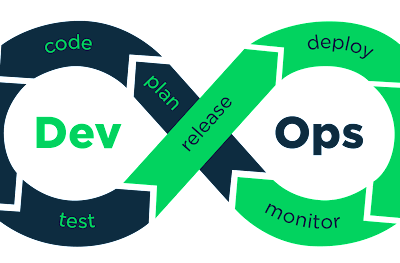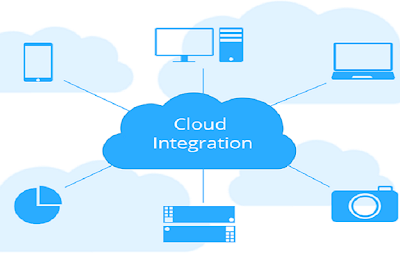In today’s increasingly digital environment, how a company addresses cloud computing strategy is critical. Cloud use has been growing for some years, and the epidemic has expedited it.
However, when a post-pandemic world begins to emerge, new tendencies in cloud utilization emerge. The growing usage of the public cloud is boosting cloud spending for businesses of all sizes, and public cloud spending is already a substantial line item in IT budgets.
Cloud-first policies and cloud migration are top of mind for senior IT leaders, particularly in enterprise environments. As a result, organizations’ public cloud spending and workload quantities are fast expanding. There are different types of cloud computing. So, I will explain in detail the 4 main types, along with their pros and cons.
Why Should You Know About Types of Cloud Computing?
Cloud computing is Internet-based computing in which a shared pool of resources is available via broad network access, and these resources may be deployed or released with minimal administration effort and service provider involvement.
Choosing a cloud type or cloud service is a one-of-a-kind decision. No two clouds are the same (even if they are of the same type), and no two cloud services are utilized to address the same problem.
However, by recognizing the commonalities, you may be more educated about how the limitations of each cloud computing model and cloud service may affect your organization. The distinctions between public clouds, private clouds, hybrid clouds, and multi clouds were originally simply characterized by location and ownership.
But it’s not that straightforward anymore. So, although we compare the differences below, keep in mind that there are several limitations. It is critical to learn what differentiates them and how to select the finest.
Top 4 Types of Cloud Computing:
Public Cloud:
Public clouds are cloud environments that are often built using IT infrastructure that is not controlled by the end user. Alibaba Cloud, Amazon Web Services (AWS), Google Cloud, IBM Cloud, and Microsoft Azure are among the major public cloud providers.
Traditional public clouds were always off-premises, but today’s public cloud providers are beginning to offer cloud services on clients’ on-premise data centers.

Advantages:
The public cloud is less expensive to own than the private and hybrid cloud. It is maintained by the cloud service provider, so you do not need to worry about it. It is simpler to incorporate. As a result, it provides consumers with greater flexibility.
Because its services are offered through the internet, the public cloud is not limited by geography. It is open to the whole public, thus there is no restriction on the number of users.
Disadvantages:
Because resources are shared openly, the public cloud is less secure. The high-speed internet network link to the cloud provider determines performance. The Client has no data control.
Private Cloud:
Private clouds are distributed systems that operate on private infrastructure and enable customers with dynamic computing resource provisioning. Instead of a pay-as-you-go approach in private clouds, various methods that control cloud consumption and appropriately bill different departments or divisions of a company might exist.

Advantages:
Users benefit from a high level of security and privacy when using a private cloud. It provides greater performance, speed, and storage capacity. It enables the IT staff to assign and deploy on-demand IT resources fast. Because the cloud is administered by the company, it has complete control over it. As a result, the company does not need to rely on anybody.
Disadvantages:
Cloud services require skilled individuals to manage and run. Because the private cloud is only available within the business, the scope of activities is limited. Private clouds are not appropriate for enterprises with a large user base or organizations that lack the prebuilt infrastructure and adequate people to operate and administer the cloud.
Hybrid Cloud:
A hybrid cloud is an apparent single IT environment made up of several environments linked through local area networks (LANs), wide area networks (WANs), virtual private networks (VPNs), and/or APIs.
The hybrid cloud is somewhat secure since services operating on the public cloud may be accessed by anyone, whilst those running on the private cloud can only be accessible by the organization’s users.

Advantages:
A hybrid cloud is appropriate for enterprises that demand greater security than a public cloud. It allows you to deploy new goods and services faster. The hybrid cloud is a good strategy to decrease risk. Because of the public cloud, this cloud provides flexible resources, while the private cloud provides secure resources.
Disadvantages:
The security aspect of the hybrid cloud is not as good as that of the private cloud.
It is tough to handle more than one deployment option in a hybrid cloud. The stability of services in the hybrid cloud is dependent on cloud service providers.
Community Cloud:
A community cloud allows a group of multiple organizations to access systems and services in order to communicate information between the organization and a specific community. It is owned, managed, and administered by one or more community organizations, a third party, or a combination of these.

Advantages:
Because the entire cloud is shared by numerous enterprises or communities, the community cloud is cost-effective. It is appropriate for enterprises seeking a collaborative cloud with additional security features than the public cloud. It offers a cooperative and distributive atmosphere.
The community cloud enables diverse businesses to share cloud resources, infrastructure, and other features.
Disadvantages:
The community cloud is not appropriate for every company. The security features are inferior to those of the private cloud. It is insufficient if there is no teamwork. All community members share a fixed amount of data storage and bandwidth.
Conclusion:
Cloud computing has several advantages for your company. It enables you to set up what is basically a virtual office, giving you the freedom to connect to your business from anywhere, at any time.
Access to your data is becoming much simpler with the expanding number of web-enabled devices utilized in today’s work environment (e.g., smartphones, tablets). It has changed how businesses store, access, and share information, collaborate and manage computer resources.
With the introduction of the internet, cloud computing has enabled new possibilities for businesses to do business by allowing them to move beyond traditional on-premises IT infrastructure. Cloud computing provides modern enterprises with enhanced flexibility, efficiency, scalability, security, collaboration, and cost savings.
However, the benefits and services depend on the type of cloud computing that you chose for your business. Among the four main types of cloud computing, choose the best you think is best for you and your team for efficiency in the workplace, by referring to its pros and cons.





